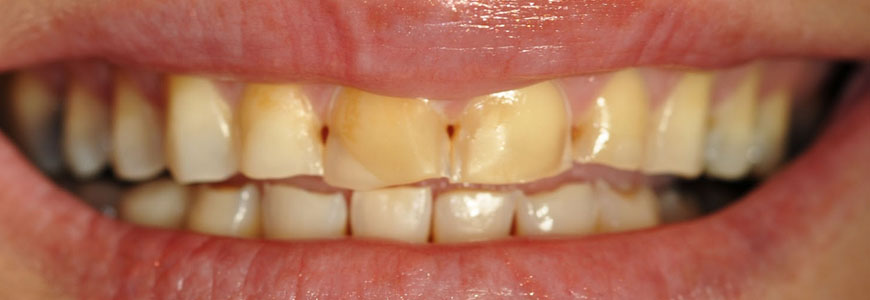
Dental fluorosis is an adverse consequence of fluoride overuse. Enamel or dental fluorosis is a condition caused by 'excessive' intake of fluoride over an extended period of time. The most common symptom of dental fluorosis is a chalk-like discoloration of teeth with white spots or lines on tooth enamel. In more severe cases the affected areas have a yellow or brown discoloration. In extreme cases, fluorosis may result in a pitted tooth surface.
The teeth of those affected by fluorosis may appear mildly discolored. For instance, there may be lacy white markings that only dentists can detect.
Powdered or liquid concentrate infant formula should be mixed with water that is fluoride-free or which contains low levels of fluoride. Do not use fluoride toothpaste until the child is two years old unless advised to do so by a dentist. For children age two and older, place only a pea-sized amount of fluoride toothpaste on the toothbrush at each brushing. Avoid toothpastes having flavors that may encourage swallowing. An adult should supervise the use of fluoride-containing dental products by children younger than six years old to make sure that they do not swallow it.
Fluorosis affects only the appearance of teeth. It does not result in cavities. As a result, most of the treatment for fluorosis consists of just masking the stain.
Most cases of fluorosis are too minor to be treated. Sometimes fluorosis occurs only on the back teeth, where it is not noticeable. More serious cases and cases involving the front teeth can be treated by removing the surface-stained areas through tooth whitening or other procedures. Severe cases of fluorosis may require covering with bonding, crowns or veneers.